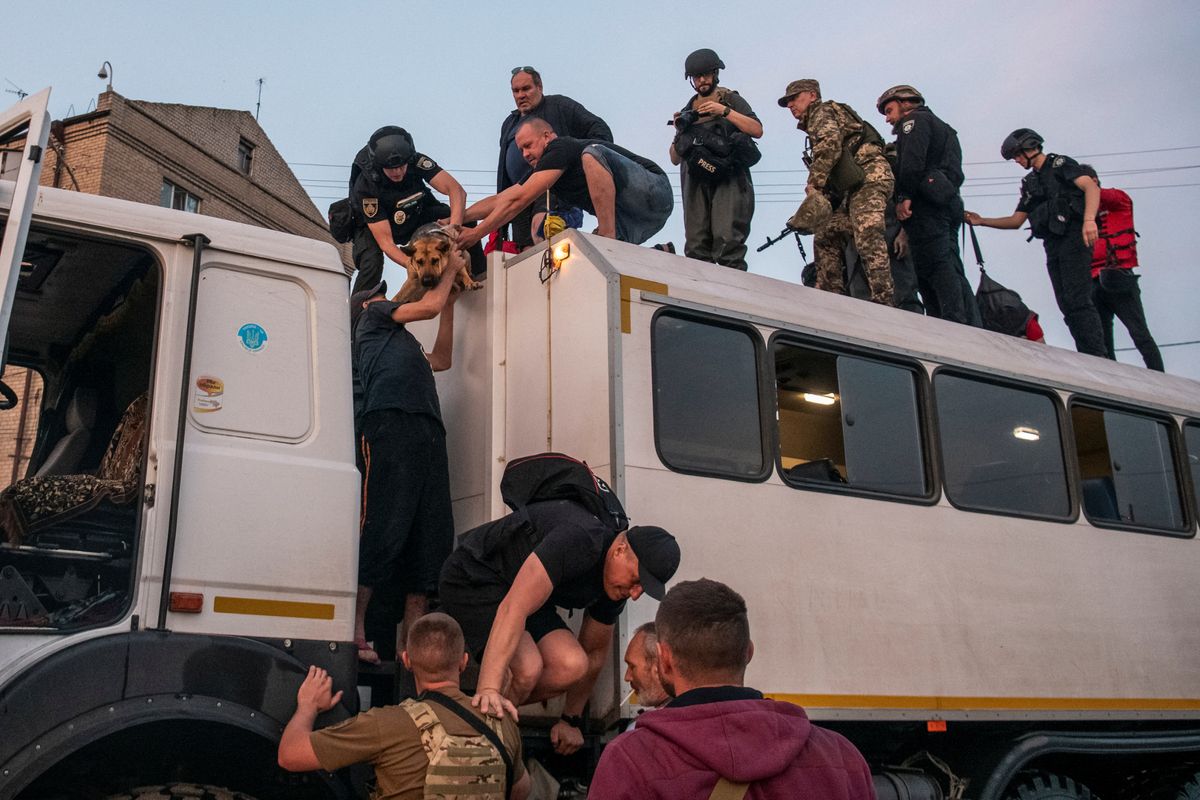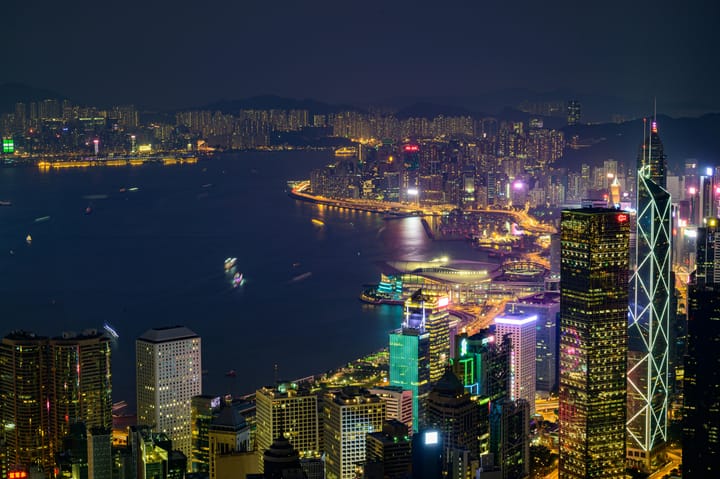Ukraine’s Kakhovka dam is blown up
Russia has been controlling the dam since early on in its invasion last year.

A few minutes every morning is all you need.
Stay up to date on the world's Headlines and Human Stories. It's fun, it's factual, it's fluff-free.
The backstory: To control the temperatures at the Zaporizhzhia nuclear plant, the Kakhovka dam on the Dnipro River in Ukraine supplies water to it from a major reservoir. Water from that same reservoir flows into water reserves in Crimea, which was annexed by Russia in 2014. The river also separates Russian-occupied areas of Ukraine from those still controlled by the Ukrainian government.
More recently: Russia has been controlling the dam since early on in its invasion last year. Last October, Ukrainian President Zelenskiy said that Russia was mining the dam and that the country planned to destroy it to stop Ukraine from reclaiming occupied parts of its southern and eastern regions. But, the Geneva Conventions ban targeting dams in war because of the danger to civilians. Over the weekend, American and Russian officials said that the latest Ukrainian counteroffensive had started, but now, there’s a new problem.
The development: On Tuesday, the dam was blown up, meaning 22,000 people in 14 settlements in the Kherson region are at risk of flooding from the reservoir. Emergency crews did their best to evacuate the most at-risk on the western side of the river. Ukraine is blaming Russia for the disaster, but Russia has denied any connection and is saying that Ukraine is responsible for the sabotage. Some Russian officials are also saying the dam burst on its own because of earlier damage. Experts have said so far that the evidence looks to point to an internal blast. Ukraine is also accusing Russia of shelling areas as they were being evacuated.
This development could end up turning the tide of the war, with NATO now taking steps to strengthen its support of Ukraine even more. Luckily, the Zaporizhzhia power plant should be able to cool its reactors for a while using water from a separate pond.
Key comments:
“This is the largest man-made environmental disaster in Europe in decades,” Zelenskiy said in an address to central and eastern European leaders.
"Apparently, this sabotage is also connected with the fact that having started large-scale offensive actions two days ago, now the Ukrainian armed forces are not achieving their goals,” Kremlin spokesman Dmitry Peskov said to reporters, blaming Ukraine for the disaster.
“The attack on the dam is, after all, one that we have long feared,” German Chancellor Olaf Scholz told RTL television in an interview. “This is an aggression of the Russian side to stop the Ukrainian offensive to defend their own country.”
“There are design conditions which were calculated for this event,” Petro Kotin, the president of Energoatom, said. “There are no dire consequences that are critical for the Zaporizhzhia Nuclear Power Plant.”




Comments ()